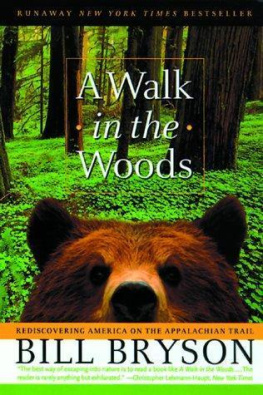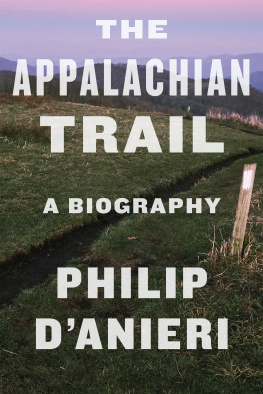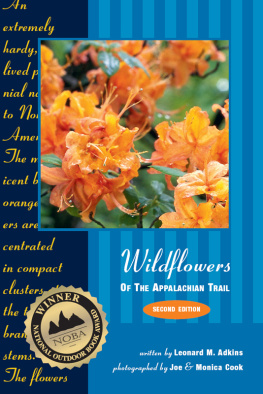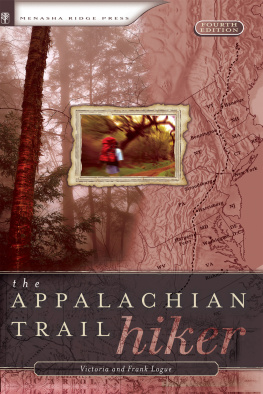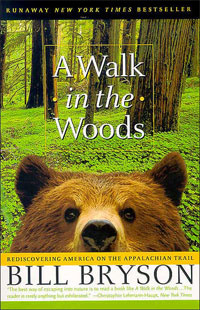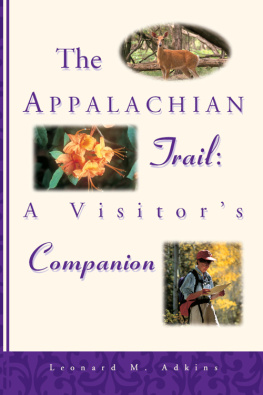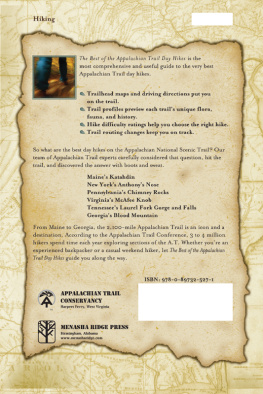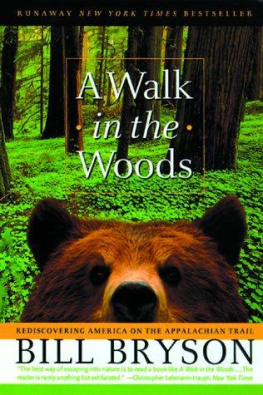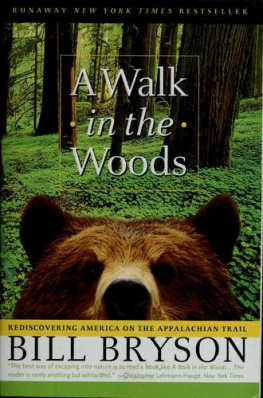A WALK IN THE WOODS REDISCOVERING AMERICA ON THE APPALACHIAN TRAIL
by Bill Bryson
Not long after I moved with my family to a small town in New Hampshire I happened upon a path that vanished into a wood on the edge of town.
A sign announced that this was no ordinary footpath but the celebrated Appalachian Trail. Running more than 2,100 miles along America's eastern seaboard, through the serene and beckoning Appalachian Mountains, the AT is the granddaddy of long hikes. From Georgia to Maine, it wanders across fourteen states, through plump, comely hills' whose very names--Blue Ridge, Smokies, Cumberlands, Green Mountains, White Mountains-- seem an invitation to amble. Who could say the words "Great Smoky Mountains" or "Shenandoah Valley" and not feel an urge, as the naturalist John Muir once put it, to "throw a loaf of bread and a pound of tea in an old sack and jump over the back fence"?
And here it was, quite unexpectedly, meandering in a dangerously beguiling fashion through the pleasant New England community in which I had just settled. It seemed such an extraordinary notion--that I could set off from home and walk 1,800 miles through woods to Georgia, or turn the other way and clamber over the rough and stony White Mountains to the fabled prow of Mount Katahdin, floating in forest 450 miles to the north in a wilderness few have seen. A little voice in my head said: "Sounds neat! Let's do it!"
I formed a number of rationalizations. It would get me fit after years of waddlesome sloth. It would be an interesting and reflective way to reacquaint myself with the scale and beauty of my native land after nearly twenty years of living abroad. It would be useful (I wasn't quite sure in what way, but I was sure nonetheless) to learn to fend for myself in the wilderness. When guys in camouflage pants and hunting hats sat around in the Four Aces Diner talking about fearsome things done out-of-doors, I would no longer have to feel like such a cupcake. I wanted a little of that swagger that comes with being able to gaze at a far horizon through eyes of chipped granite and say with a slow, manly sniff, "Yeah, I've shit in the woods."
And there was a more compelling reason to go. The Appalachians are the home of one of the world's great hardwood forests-- the expansive relic of the richest, most diversified sweep of woodland ever to grace the temperate world--and that forest is in trouble. If the global temperature rises by 4C over the next fifty years, as is evidently possible, the whole of the Appalachian wilderness below New England could become savanna. Already trees are dying in frightening numbers. The elms and chestnuts are long gone, the stately hemlocks and flowery dogwoods are going, and the red spruces, Fraser firs, mountain ashes, and sugar maples may be about to follow. Clearly, if ever there was a time to experience this singular wilderness, it was now.
So I decided to do it. More rashly, I announced my intention-- told friends and neighbors, confidently informed my publisher, made it common knowledge among those who knew me. Then I bought some books and talked to people who had done the trail in whole or in part and came gradually to realize that this was way beyond--way beyond-anything I had attempted before.
Nearly everyone I talked to had some gruesome story involving a guileless acquaintance who had gone off hiking the trail with high hopes and new boots and come stumbling back two days later with a bobcat attached to his head or dripping blood from an armless sleeve and whispering in a hoarse voice, "Bear!" before sinking into a troubled unconsciousness.
The woods were full of peril--rattlesnakes and water moccasins and nests of copperheads; bobcats, bears, coyotes, wolves, and wild boar; loony hillbillies destabilized by gross quantities of impure corn liquor and generations of profoundly unbiblical sex; rabies-crazed skunks, raccoons, and squirrels; merciless fire ants and ravening blackfly; poison ivy, poison sumac, poison oak, and poison salamanders; even a scattering of moose lethally deranged by a parasitic worm that burrows a nest in their brains and befuddles them into chasing hapless hikers through remote, sunny meadows and into glacial lakes.
Literally unimaginable things could happen to you out there. I heard of a man who had stepped from his tent for a midnight pee and was swooped upon by a short-sighted hoot owl--the last he saw of his scalp it was dangling from talons prettily silhouetted against a harvest moon--and of a young woman who was woken by a tickle across her belly and peered into her sleeping bag to find a copperhead bunking down in the warmth between her legs. I heard four separate stories (always related with a chuckle) of campers and bears sharing tents for a few confused and lively moments; stories of people abruptly vaporized ("tweren't nothing left of him but a scorch mark") by body-sized bolts of lightning when caught in sudden storms on high ridgelines; of tents crushed beneath falling trees, or eased off precipices on ballbearings of beaded rain and sent paragliding on to distant valley floors, or swept away by the watery wall of a flash flood; of hikers beyond counting whose last experience was of trembling earth and the befuddled thought "Now what the------?"
It required only a little light reading in adventure books and almost no imagination to envision circumstances in which I would find myself caught in a tightening circle of hunger-emboldened wolves, staggering and shredding clothes under an onslaught of pincered fire ants, or dumbly transfixed by the sight of enlivened undergrowth advancing towards me, like a torpedo through water, before being bowled backwards by a sofa-sized boar with cold beady eyes, a piercing squeal, and a slaverous, chomping appetite for pink, plump, city-softened flesh.
Then there were all the diseases one is vulnerable to in the woods--giardiasis, eastern equine encephalitis, Rocky Mountain spotted fever, Lyme disease, ehrlichiosis, schistosomiasis, brucellosis, and shigellosis, to offer but a sampling. Eastern equine encephalitis, caused by the prick of a mosquito, attacks the brain and central nervous system. If you're lucky you can hope to spend the rest of your life propped in a chair with a bib around your neck, but generally it will kill you. There is no known cure. No less arresting is Lyme disease, which comes from the bite of a tiny deer tick. If undetected, it can lie dormant in the human body for years before erupting in a positive fiesta of maladies. This is a disease for the person who wants to experience it all. The symptoms include, but are not limited to, headaches, fatigue, fever, chills, shortness of breath, dizziness, shooting pains in the extremities, cardiac irregularities, facial paralysis, muscle spasms, severe mental impairment, loss of control of body functions, and--hardly surprising, really-- chronic depression.
Then there is the little-known family of organisms called hantaviruses, which swarm in the micro-haze above the feces of mice and rats and are hoovered into the human respiratory system by anyone unlucky enough to stick a breathing orifice near them-- by lying down, say, on a sleeping platform over which infected mice have recently scampered. In 1993 a single outbreak of hantavirus killed thirty-two people in the southwestern United States, and the following year the disease claimed its first victim on the AT when a hiker contracted it after sleeping in a "rodent-infested shelter." (All AT shelters are rodent infested.) Among viruses, only rabies, ebola, and HIV are more certainly lethal. Again, there is no treatment.
Finally, this being America, there is the constant possibility of murder. At least nine hikers (the actual number depends on which source you consult and how you define a hiker) have been murdered along the trail since 1974. Two young women would die while I was out there.
Next page
